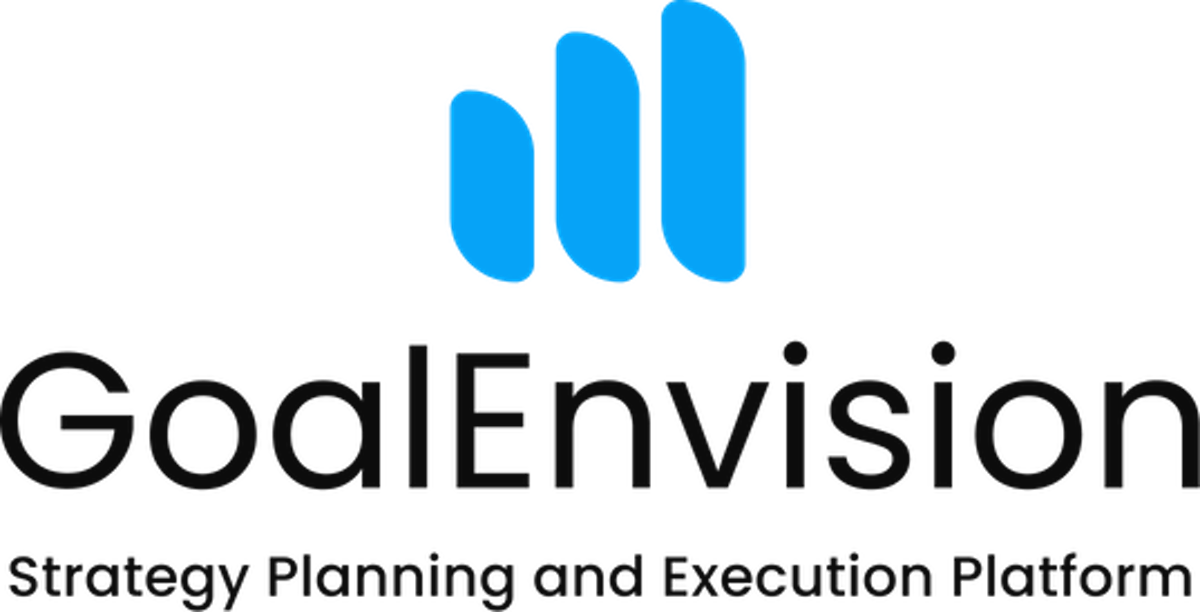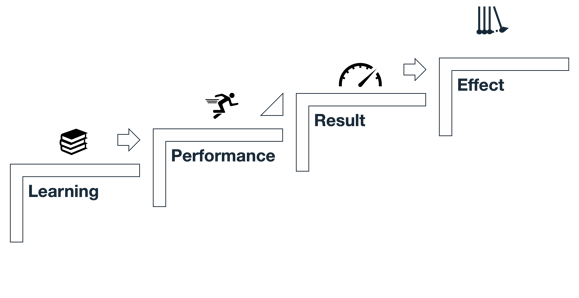A Step-by-Step Guide to Effective Goals with the Goal Ladder
Share this article
Setting goals is a critical part of managing a successful organisation. To maximise the impact of your goal-setting efforts, it is important to start with the overall effect goals and then break these down into more concrete result, performance and learning goals. This approach ensures that your goals are clear, measurable and achievable, which in turn leads to greater success for the whole organisation.
1. Effect goals: your ultimate purpose
Effect goals are the long-term changes or results that you hope to achieve. These goals are often influenced by external factors and can be difficult to fully control, but they provide the direction for all other work. Examples of effect goals could be to improve customer satisfaction or to reduce the company's environmental impact.
Example: Increase customer satisfaction by 20% within two years.
2. Result goals: Concrete targets
Result goals are the specific, measurable results you want to achieve to contribute to your effect goals. These goals are more within your control and are directly linked to your results.
Example: Get 95% positive customer reviews on our products within one year.
3. Performance goals: tasks
Performance goals are about the activities and efforts needed to achieve the result targets. These objectives specify what needs to be done on a daily or weekly basis to ensure that you reach your performance targets.
Example: Conduct at least 20 customer surveys every month to gather feedback.
4. Learning goals: The development journey
Learning goals are important when you do not have full clarity on the required impact, results or achievements. These goals are about acquiring the knowledge and skills needed to better understand and achieve your other goals.
Example: Attend a course on customer relationship management to improve your understanding of customer needs.
Step-by-Step Example of the Goal Ladder
To illustrate how these objectives are linked, consider a fictional scenario where a company wants to improve its customer service.
1. Effect goal: Increase customer satisfaction by 20% within two years.
2. Result Goal: Get 95% positive customer reviews on our products within one year.
3. Performance goal: Conduct at least 20 customer surveys every month to gather feedback.
4. Learning goal: Attend a course on customer relationship management to improve understanding of customer needs.
By starting with effect goals and then breaking them down into result, performance and learning goals, you can create a clear and manageable path to success. This also makes it easier to identify what actions are needed and how you can measure progress along the way.
How to use the Goal Ladder in GoalEnvision
By using the goal ladder, organisations can ensure that all levels of goal setting are covered, from the overall effect goals to the specific learning goals. This helps to create a clear path forward and ensures that everyone within the organisation understands what needs to be done to achieve success. Read more about GoalEnvision.
Benefits of the goal ladder
Structure and clarity: The goal ladder provides a clear structure for how different types of goals relate to each other, creating clarity and understanding within the organisation.
Focus on performance and learning: Including both performance and learning goals ensures that both performance and continuous development are prioritised.
Measurability and follow-up: Setting clear effect and performance goals makes it easier to measure progress and follow up on work.
Engagement and motivation: When everyone in the organisation understands the goals and what is required to achieve them, engagement and motivation increase.
Share this article
Did you like this article? Here is more...
Latest



